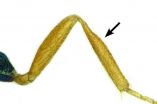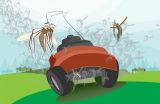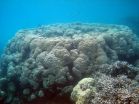INFORMATION:
Schools with higher black, minority populations call cops, not docs
2015-07-22
(Press-News.org) Poor schools that have more black and minority students tend to punish students rather than seek medical or psychological interventions for them, according to a Penn State sociologist.
"There's been a real push toward school safety and there's been a real push for schools to show they are being accountable," said David Ramey, assistant professor of sociology and criminology. "But, any zero-tolerance policy or mandatory top-down solutions might be undermining what would be otherwise good efforts at discipline, and not establishing an environment based around all the options available."
According to the study, schools and school districts with a greater percentage of black student population had significantly higher rates of expulsions and suspensions, as well as higher rates of referrals to law enforcement and arrests.
Schools and districts with greater black populations also have lower enrollment in government programs designed to stop discrimination against students who have a disability, such as Section 504 of the Rehabilitation Act of 1973 and the Individuals with Disabilities Education Act -- IDEA.
The way schools are governed may influence whether students are punished or referred to medical help.
"Schools in high disadvantaged districts tend to be centralized, so all the schools in that district tend to develop the same practices," Ramey said. "Schools that are in less disadvantaged districts tend to have more autonomy."
A disadvantaged district is defined as one with low high-school graduation rates, high unemployment, more single mother-headed households, low median income and a high percentage of adults employed in low-paid sales and retail jobs.
School districts with higher populations of Hispanic students were less likely to seek criminal action against students, but were also less likely to consider medical treatments for behavioral problems, added Ramey, who released his findings in a recent issue of Sociology of Education.
Parental reaction to the increased media attention on school shootings and violence at inner city schools in the late 20th century is one reason that school officials adopted zero-tolerance policies, such as immediate suspensions and expulsions.
"In the late '90s crime declined massively, but, media coverage of crime did increase in scope," said Ramey. "We started seeing reports of school shootings and terrorism and that created a push to create the perception of safe schools, which included police in the schools and metal detectors at the doorway."
The study builds on prior research that looked at how educators assessed the behavior of individual students based on race.
"The bulk of my earlier research looked at how, for the same minor levels of misbehaviors -- for example, classroom disruptions, talking back -- white kids tend to get viewed as having ADHD, or having some sort of behavioral problem, while black kids are viewed as being unruly and unwilling to learn," said Ramey.
Ramey collected data from 60,000 schools in more than 6,000 school districts for the study. He gathered data for the study from the U.S. Department of Education Civil Rights Data Collection and National Center for Education Statistics. The government also provides enrollment statistics for IDEA and Section 504 programs.
ELSE PRESS RELEASES FROM THIS DATE:
New smart drug targets and reduces site-specific inflammation
2015-07-22
BEER-SHEVA, Israel...July 22, 2015 - Ben-Gurion University of the Negev (BGU) and University of Colorado researchers have developed a dynamic "smart" drug that targets inflammation in a site-specific manner and could enhance the body's natural ability to fight infection and reduce side effects.
The uniqueness of this novel anti-inflammatory molecule, reported in the current issue of Journal of Immunology, can be found in a singular property. When injected, it is as a non-active drug. However, a localized site with excessive inflammation will activate it. Most other anti-inflammatory ...
Computer security tools for journalists lacking in a post-Snowden world
2015-07-22
Edward Snowden's leak of classified documents to journalists around the world about massive government surveillance programs and threats to personal privacy ultimately resulted in a Pulitzer Prize for public service.
Though Snowden had no intention of hiding his identity, the disclosures also raised new questions about how effectively news organizations can protect anonymous sources and sensitive information in an era of constant data collection and tracking.
A new study by University of Washington and Columbia University researchers that will be presented next month ...
New study indicates ankle-brachial index associated with mild cognitive impairment
2015-07-22
Amsterdam, The Netherlands, July 22, 2015 - In a large population-based study of randomly selected participants in Germany, researchers found that mild cognitive impairment (MCI) occurred significantly more often in individuals diagnosed with a lower ankle brachial index (ABI), which is a marker of generalized atherosclerosis and thus cumulative exposure to cardiovascular risk factors during lifetime. Interestingly, this strong association was only observed in patients with non-amnestic MCI, but not amnestic MCI. There also was no independent association of MCI and intima ...
NASA's RapidScat identifies Typhoon Halola's strongest side
2015-07-22
Typhoon Halola's strongest typhoon-force winds were located on the northern half of the storm, as identified from the RapidScat instrument that flies aboard the International Space Station.
RapidScat gathered surface wind data on the Typhoon Halola on July 21at 2 p.m. GMT (10 a.m. EDT). RapidScat data showed that the strongest sustained winds stretched from northwest to northeast of the center at speeds up to 30 meters per second (108 kph/67 mph). Strong winds wrapped around the center of circulation from northwest to east to the southern quadrant, while the weakest winds ...
Twisted wasps: Two new unique parasitoid wasp species sting the heart of Europe
2015-07-22
Much to his own surprise, Hannes Baur from the Natural History Museum Bern not only reports on whole two new parasitoid wasps at the heart of Europe, the Swiss Alps and Swiss Central Plateau. While the common discovery usually involves cryptic, or "camouflaging" within their groups species, his stand out. Baur's work is published in the open-access journal ZooKeys.
The insects he describes are visibly quite unique with their body structures. In the case of the Pteromalus briani wasp, its extraordinarily protruding hind legs differentiate it among the whole family. Meanwhile, ...
Mowing dry detention basins makes mosquito problems worse, team finds
2015-07-22
CHAMPAIGN, Ill. -- A study of the West Nile virus risk associated with "dry" water-detention basins in Central Illinois took an unexpected turn when land managers started mowing the basins. The mowing of wetland plants in basins that failed to drain properly led to a boom in populations of Culex pipiens mosquitoes, which can carry and transmit the deadly virus, researchers report.
A paper describing their findings is in press in the journal Ecological Applications.
The team, led by University of Illinois postdoctoral researcher Andrew Mackay, found that mowing down cattails ...
This week from AGU: Arctic mercury, EarthQuiz challenge & 5 new research papers
2015-07-22
GeoSpace
Warmer air, less sea ice lead to mercury decline in Arctic Ocean
The amount of mercury in the Arctic Ocean is declining as the region rapidly warms and loses sea ice, according to a new study. A new study in Geophysical Research Letters suggests that fish, marine mammals, polar bears, whales and humans in the Arctic might potentially be consuming lower amounts of toxic methylmercury as the region warms.
Eos.org
Puzzles invite you to explore Earth with interactive imagery
The EarthQuiz challenge can take you to virtual field locations with just the click of ...
Predicting the shape of river deltas
2015-07-22
The Mississippi River delta is a rich ecosystem of barrier islands, estuaries, and wetlands that's home to a diverse mix of wildlife -- as well as more than 2 million people. Over the past few decades, the shape of the delta has changed significantly, as ocean waves have carved away at the coastline, submerging and shrinking habitats.
To keep flooding at bay, engineers have erected dams and levees along the river. However, it's unclear how such protective measures will affect the shape of the river delta, and its communities, over time.
Now researchers from MIT and ...
New study from Florida Tech finds Pacific reef growth can match rising sea
2015-07-22
MELBOURNE, FLA. -- The coral reefs that have protected Pacific Islanders from storm waves for thousands of years could grow rapidly enough to keep up with escalating sea levels if ocean temperatures do not rise too quickly, according to a new study from Florida Institute of Technology.
The study, published Wednesday in the journal Royal Society Open Science, provides the first evidence that well-managed reefs will be able to keep up with sea-level rise through vertical growth. But that can happen only if carbon dioxide levels in the atmosphere stay below 670 parts-per ...
Menopause associated with more fat around heart, raising risk for heart disease
2015-07-22
PITTSBURGH, July 22, 2015 - Late- and post-menopausal women have significantly greater volumes of fat around their hearts - a risk factor for heart disease - than their pre-menopausal counterparts, a University of Pittsburgh Graduate School of Public Health study has shown for the first time.
The finding, published online and scheduled for the Sept. 1 issue of The Journal of Clinical Endocrinology & Metabolism, likely can be attributed to changing hormone levels and could guide potentially life-saving interventions. The work was funded by the National Institutes of Health ...



